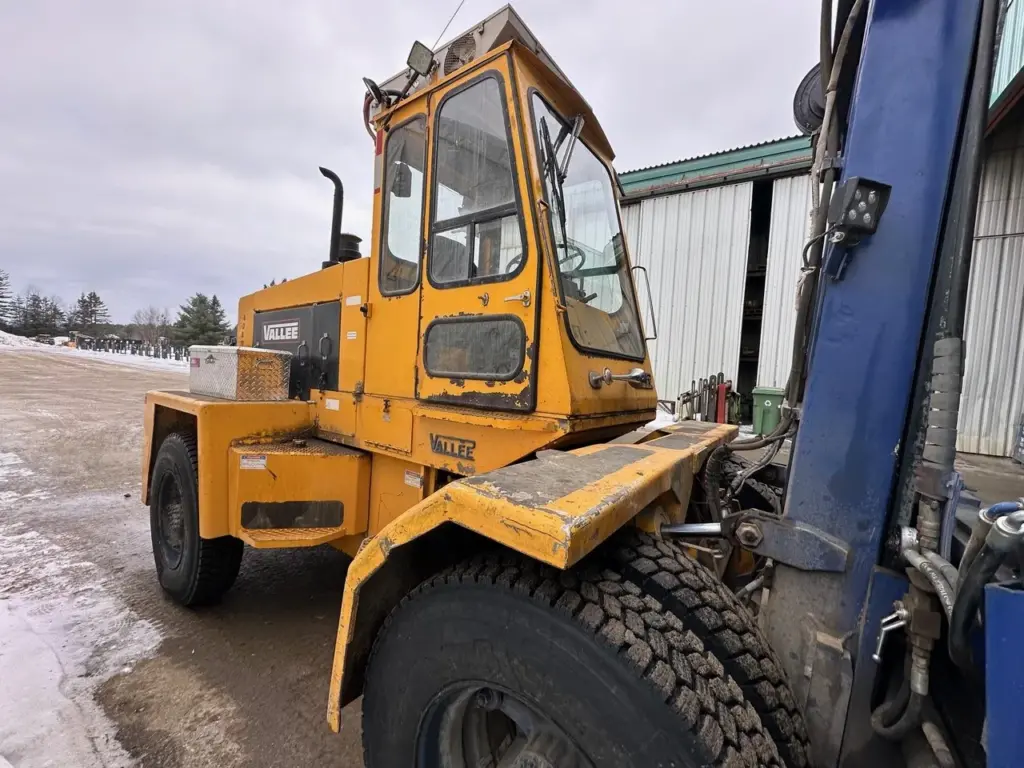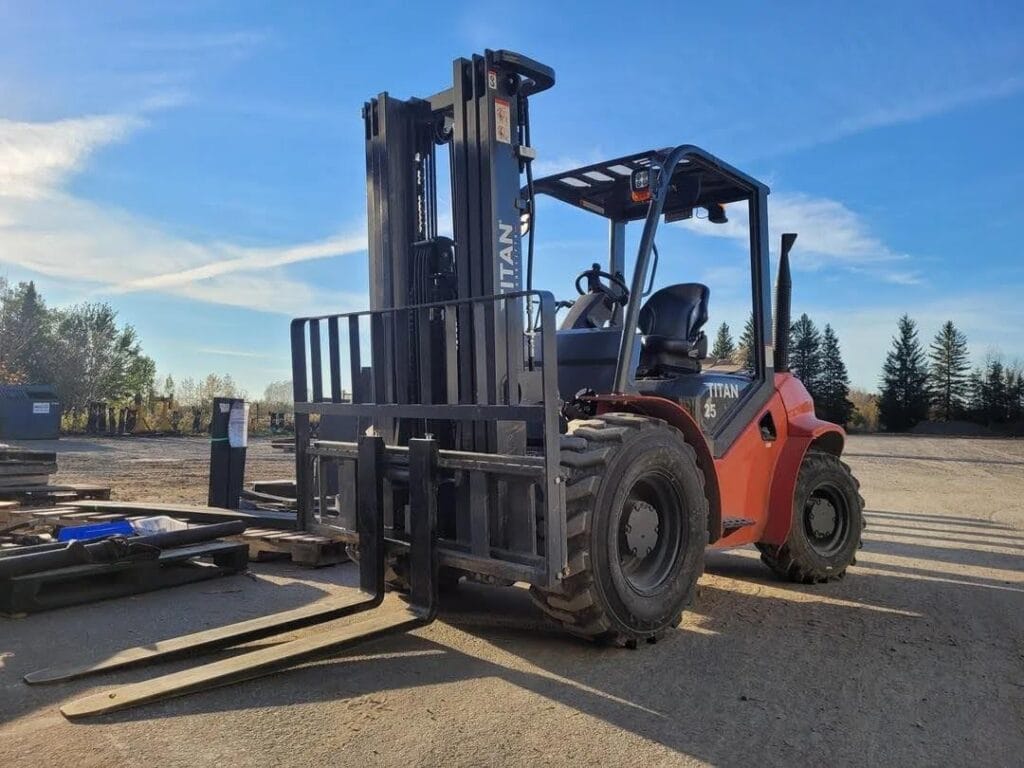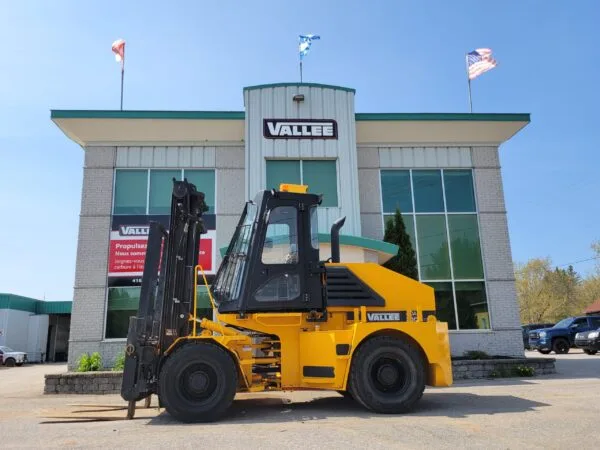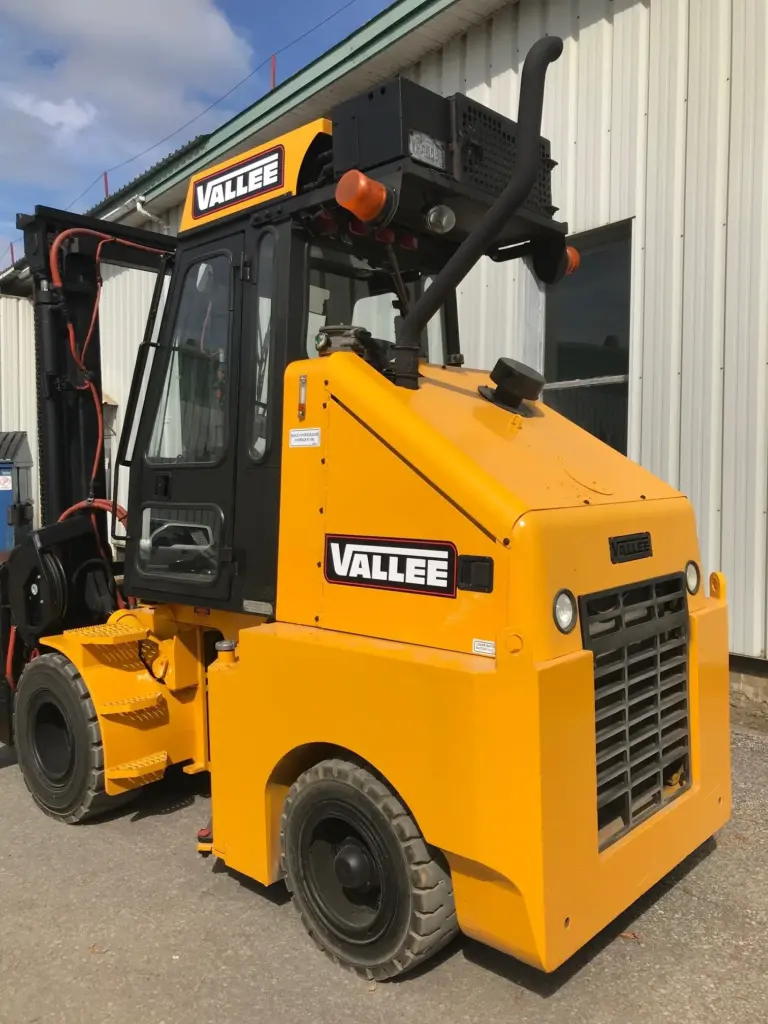Are you looking to optimize logistics and productivity in your business? The used equipment market is an interesting option.
While buying new equipment is an option, choosing a used forklift offers a smart solution: you become the owner of your equipment at a lower cost. Discover the information you need to make an informed choice, with confidence and without mistakes.

Used Forklift: What Are Its Advantages?
When a company or professional chooses a used lifting vehicle, they can expect at least six direct benefits for their operations:
1 – Reduced Costs:
The most obvious advantage is the significant reduction in acquisition costs compared to buying a new vehicle. This substantial saving frees up capital, which can be reinvested in other projects or in customizing the equipment.
2 – Quick Availability:
Given the sometimes long manufacturing and delivery times for new equipment, the used market offers almost immediate availability. This efficient solution allows urgent needs to be met quickly or serves as a temporary solution while waiting for a new delivery.
3 – Low Usage Requirements:
If your forklift will be used only occasionally, for very specific or non-daily tasks, buying a used forklift is particularly relevant. In such cases, a high investment in a new machine may seem disproportionate. A used forklift can provide reliable service for years for a small or medium-sized business that doesn’t use it every day, especially if it operates up to 800 hours per year.
4 – Reliable Quality:
The quality of used forklifts, particularly from well-known manufacturers or brands, is often high. These vehicles typically come from rental fleets or lease returns and undergo regular maintenance with original manufacturer parts. A rigorous inspection and refurbishment process remains essential to ensure the quality of used equipment. Some professional sellers even offer forklifts at various levels of use and inspection, ranging from nearly new to standard or “as-is” condition, to meet the needs and budgets of different buyers.
5 – Durability and Environmental Impact:
Choosing a used forklift is also an ecological and sustainable decision. Refurbishing an existing machine is far more resource-efficient and has a lower environmental impact than producing new equipment, positively contributing to your company’s carbon footprint. By prioritizing reuse, you reduce industrial waste, limit raw material extraction, and actively participate in the circular economy. This tangible and measurable approach enhances your image with clients, partners, and employees, demonstrating that efficiency is closely tied to responsibility.
6 – Access to Tested
Equipment and a Variety of Vehicles:
Used forklifts have a proven track record of performance in real-world environments, providing valuable insights into their reliability and durability. The used market also offers excellent flexibility and a wide range of brands, models, and equipment types, increasing the likelihood of finding the machine that precisely meets your specific needs.

Plan Ahead: Checks Before Your Purchase
Buying a used forklift requires careful attention and meticulous inspection to ensure the safety and performance of your future equipment. Here are 7 points to check before finalizing your purchase:
1 – General and Visual Condition:
Conduct a thorough inspection of the forklift’s physical structure. Look for signs of wear, damage, and the condition of welds. The engine and hydraulic systems should also be checked to ensure proper functioning. Don’t hesitate to request a test drive to evaluate the machine’s performance and maneuverability.
2 – Hour Meter:
Check the hour meter, which indicates the total hours the forklift has been used. This provides valuable information about its wear and tear. It is essential to compare it with other documents, such as inspection reports, to detect any potential tampering.
3 – Component Wear:
- Tires, forks, mast: Check the condition and wear of these crucial elements for the safety and efficiency of the forklift.
- Battery for electric forklifts: Investigate the battery’s wear and capacity. If it is near the end of its life, replacement represents a significant additional cost. A complete refurbishment may include a new battery.
4 – Safety Devices:
Regulations require the presence of restraint devices. Ensure all safety elements are operational, including brakes, reverse alarms, and seatbelts.
5 – Maintenance History and Legal Documents:
Request the maintenance records. A history of regular servicing is a guarantee of reliability and longevity. Also, insist on a readable certificate of compliance with standards.
6 – Engine Type and Specifications:
The choice should precisely match your operational needs. Ensure that load capacity, lifting height, and maneuverability are suitable for your work environment and the materials you handle. For example, an all-terrain forklift, with four-wheel drive and high ground clearance, is ideal for construction sites or uneven terrain. You are not alone in this decision: Vallée experts are always available to guide you toward the most relevant solution for your project. Their support is an essential aspect of your purchasing process, ensuring a safe and lasting investment.
7 – Total Cost of Ownership (TCO):
Don’t stop at the initial purchase price. Evaluate the total cost of ownership, including maintenance, spare parts, and energy consumption over the long term. This approach helps you select the model that offers the best value over time.
Vallée: Your Trusted Partner
For professionals seeking high-performance equipment, manufacturers like Vallée position themselves as ideal partners. Specializing in the sale of used forklifts—including all-terrain and high-capacity models—Vallée offers vehicles that have been inspected and refurbished by a team of experienced technicians. This ensures excellent quality.

The manufacturer also provides a wide range of brands (Vallée, Titan, Sany, Kalmar, etc.) and offers four levels of preparation:
- “Vallée Certified Premium”
- “Vallée Classic – Inspected”
- “Vallée Traditional – Inspected”
- “As Is – Tel quel”
Depending on the certification level, a forklift warranty can range from 3 to 6 months or 500 to 1,000 operating hours.
Vallée forklifts stand out for their strength and durability. Designed for outdoor work, they deliver remarkable performance even on rugged terrain, whether on unpaved surfaces or sloped areas, thanks to their all-wheel drive. Their central articulation allows them to turn in narrower aisles than traditional forklifts, and the design of their mast, combined with the cabin, provides exceptional visibility of the fork tips.

Conclusion
Purchasing a used forklift is a wise investment that can significantly improve your operational efficiency while staying within budget. By performing essential checks and choosing a trusted supplier, you can acquire high-performing and reliable equipment. Check your specialist’s inventory and request personalized advice to find the lifting vehicle that meets your needs.



